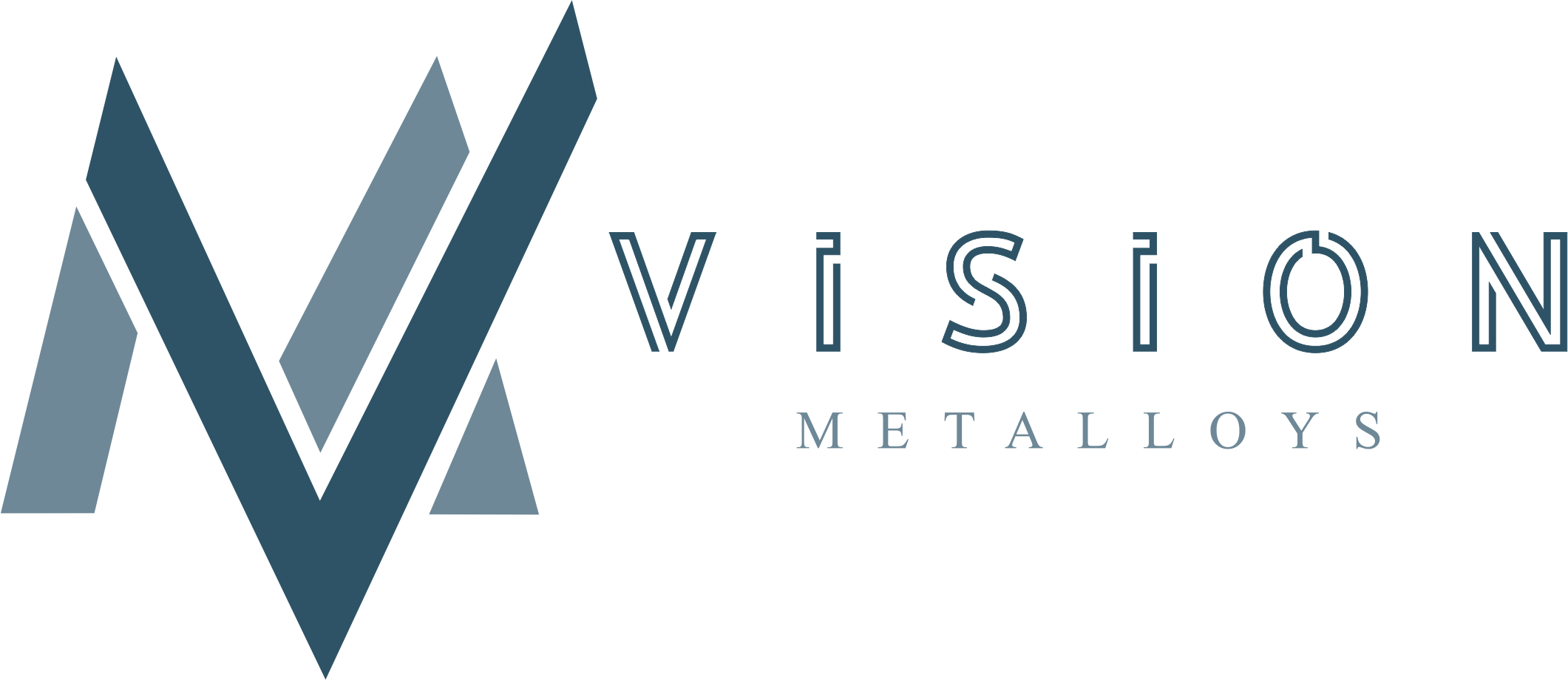
Copper Steel Grades
Copper steel alloys are typically carbon steels that have copper added to them, usually in small percentages. Copper significantly improves the steel’s corrosion resistance, particularly in marine or outdoor environments. These alloys can also have better strength and hardness, depending on the specific copper content and the type of steel used.
Properties of Copper Steel Alloys:
- Corrosion Resistance: Copper alloys are highly resistant to corrosion, especially in environments like marine, seawater, and industrial applications where exposure to moisture and chemicals is frequent.
- Electrical and Thermal Conductivity: Copper alloys typically exhibit excellent electrical conductivity, making them useful for electrical wiring, motors, and transformers. They also have good thermal conductivity.
- Strength and Durability: Copper alloys often improve upon the strength and hardness of pure copper, making them suitable for structural applications.
- Malleability and Ductility:Most copper alloys have high malleability and ductility, meaning they can be formed and shaped easily, even in complex geometries.
C11000 Copper Alloy
C11000 is a high-purity copper alloy containing at least 99.9% copper. It is also referred to as "Electrolytic Tough Pitch" (ETP) copper and is widely recognized for its excellent electrical conductivity, good corrosion resistance, and high ductility. It is used in applications where these properties are important, including electrical and electronic components, wiring, and plumbing systems.
Key Properties
| Property | Value |
|---|---|
| Chemical Composition | Cu (99.9% min.), Oxygen (0.02% max.) |
| Density | 8.92 g/cm³ |
| Electrical Conductivity | 97-100% IACS (International Annealed Copper Standard) |
| Melting Point | 1083°C (1981°F) |
| Tensile Strength | 210-290 MPa (for Annealed condition) |
| Hardness | 45-70 HRB |
Applications
C11000 copper is used in many applications due to its excellent conductivity and mechanical properties. Some of the key applications include:
- Electrical Wiring: Its high electrical conductivity makes it ideal for use in electrical wiring and cables.
- Electronic Components: Used in components that require high conductivity such as connectors, relays, and switches.
- Plumbing Systems: Commonly used in plumbing for water and gas pipes due to its corrosion resistance.
- Heat Exchangers: Due to its thermal conductivity, C11000 is used in heat exchangers and radiators.
- Coins and Medals: Used in minting of coins and medals due to its attractive finish and corrosion resistance.
Advantages of C11000 Copper
- Excellent electrical and thermal conductivity.
- High resistance to corrosion in various environments.
- Good formability and ductility for easy shaping and bending.
- Low cost compared to other copper alloys while maintaining high performance.
C11000 is a widely used copper alloy due to its high conductivity, corrosion resistance, and ductility. It is ideal for electrical, plumbing, and heat transfer applications, where performance and reliability are critical. Understanding its properties can help engineers and manufacturers select the right materials for specific uses, ensuring optimal performance and longevity.
C10100 Copper Alloy
C10100 is a high-purity copper alloy, consisting of 99.99% copper, and is widely used for its excellent electrical conductivity, corrosion resistance, and high ductility. This material is ideal for use in electrical and electronic components, where high purity is a critical requirement. C10100 is often referred to as "oxygen-free copper" or "OFC" because it has a minimal oxygen content, making it particularly suitable for high-conductivity applications.
Key Properties
| Property | Value |
|---|---|
| Chemical Composition | Cu (99.99% min.) |
| Density | 8.96 g/cm³ |
| Electrical Conductivity | 100% IACS (International Annealed Copper Standard) |
| Melting Point | 1083°C (1981°F) |
| Tensile Strength | 210-260 MPa (for Annealed condition) |
| Hardness | 40-65 HRB |
Applications
C10100 copper is commonly used in applications requiring high electrical conductivity and superior performance in extreme environments. Some of the main applications include:
- Electrical Wiring: Often used in power cables and electrical connections due to its high electrical conductivity.
- Electronic Components: Employed in the manufacturing of connectors, switches, and circuit boards for precise electronics.
- Heat Exchangers: Used in heat exchangers and radiators due to its excellent thermal conductivity.
- Medical Devices: Its high purity and corrosion resistance make it ideal for certain medical and diagnostic equipment.
- Audio Equipment: Utilized in high-end audio equipment for its superior conductivity and low signal loss.
Advantages of C10100 Copper
- Extremely high electrical conductivity (100% IACS).
- Minimal oxygen content for a high degree of purity.
- Excellent corrosion resistance, especially in high-purity or corrosive environments.
- Good formability and ductility for easy processing and shaping.
C10100 is a premium-grade copper alloy known for its exceptional electrical conductivity, corrosion resistance, and high purity. Its uses span across a variety of industries, especially in applications where maximum conductivity and minimal impurities are required. The combination of these properties makes C10100 copper ideal for electrical, electronic, and industrial applications where performance and reliability are essential.
C12000 Copper Alloy
C12000 is a copper alloy known for its combination of good electrical conductivity, strength, and corrosion resistance. It is an alloy of copper with a small percentage of phosphorus (around 0.015% - 0.040%). The addition of phosphorus enhances the alloy’s properties, making it ideal for applications that require both electrical conductivity and strength. This alloy is commonly used in applications that involve high conductivity and durability under moderate stress.
Key Properties
| Property | Value |
|---|---|
| Chemical Composition | Cu (99.90% min.), Phosphorus (0.015% - 0.040%) |
| Density | 8.96 g/cm³ |
| Electrical Conductivity | 90-94% IACS (International Annealed Copper Standard) |
| Melting Point | 1083°C (1981°F) |
| Tensile Strength | 240-350 MPa (for Annealed condition) |
| Hardness | 45-80 HRB |
Applications
C12000 copper is widely used in applications that require good electrical conductivity and strength. The alloy is particularly useful in environments where moderate stress and resistance to corrosion are needed. Some common applications include:
- Electrical Wiring: Often used in electrical wiring and cables where moderate conductivity and strength are needed.
- Bus Bars: C12000 is used in bus bars for electrical power distribution systems due to its excellent electrical conductivity.
- Heat Exchangers: Suitable for heat exchangers and radiators, where thermal conductivity and resistance to corrosion are essential.
- Switches and Connectors: Employed in electronic components such as switches, connectors, and terminals.
- Automotive and Aerospace: C12000 is also used in automotive and aerospace applications for certain components that require good formability and strength.
Advantages of C12000 Copper
- Good electrical conductivity, offering efficient current transmission.
- Enhanced strength and durability, making it suitable for more demanding applications than pure copper.
- Excellent resistance to corrosion, particularly in marine or industrial environments.
- Good formability, allowing for easy shaping and processing of the material.
C12000 is a copper alloy that balances good electrical conductivity with enhanced strength and corrosion resistance. This makes it an ideal material for a wide range of applications, particularly in electrical systems, heat exchangers, and electronic components. While it may have lower conductivity than higher-purity copper alloys, it offers valuable mechanical properties that make it highly suitable for demanding applications.
C11000 Copper Alloy
C11000 is a high-purity copper alloy, commonly known as Electrolytic Tough Pitch (ETP) copper, containing at least 99.9% copper. This alloy is widely used in applications requiring excellent electrical conductivity, good corrosion resistance, and high ductility. C11000 is used in many electrical and electronic components, such as wiring, connectors, and power cables.
Key Properties
| Property | Value |
|---|---|
| Chemical Composition | Cu (99.9% min.), Oxygen (0.02% max.) |
| Density | 8.92 g/cm³ |
| Electrical Conductivity | 97-100% IACS (International Annealed Copper Standard) |
| Melting Point | 1083°C (1981°F) |
| Tensile Strength | 210-290 MPa (for Annealed condition) |
| Hardness | 45-70 HRB |
Applications
C11000 copper is primarily used in applications that require high electrical conductivity and excellent formability. Common applications include:
- Electrical Wiring: It is commonly used for wiring, particularly in power cables, where conductivity is crucial.
- Electronic Components: C11000 is found in connectors, relays, and switches that require high conductivity.
- Heat Exchangers: Used in heat exchangers and radiators because of its thermal conductivity properties.
- Plumbing: Used in plumbing systems, including water and gas pipes, due to its corrosion resistance.
- Coins and Medals: The alloy is also used for minting coins and medals due to its attractive finish and corrosion resistance.
Advantages of C11000 Copper
- High electrical and thermal conductivity, making it ideal for power distribution and electronic components.
- Excellent resistance to corrosion, especially in water and various industrial environments.
- Good ductility and formability, which allows it to be easily processed into different shapes.
- Cost-effective in comparison to other copper alloys, making it widely used in a variety of industries.
C11000 is an ideal copper alloy for use in a wide range of applications where high electrical conductivity, corrosion resistance, and ductility are required. It is one of the most commonly used copper alloys in electrical systems, plumbing, and heat exchangers. Understanding its properties helps engineers and designers make informed decisions when selecting materials for applications where performance and reliability are paramount.
C10100 Copper Alloy
C10100 is a high-purity copper alloy, often referred to as "Oxygen-Free Copper" (OFC), containing 99.99% copper. Its exceptionally low oxygen content makes it ideal for applications where high electrical conductivity and minimal impurity are critical. C10100 is commonly used in the manufacturing of high-quality electrical components, such as wires, connectors, and conductors.
Key Properties
| Property | Value |
|---|---|
| Chemical Composition | Cu (99.99% min.) |
| Density | 8.96 g/cm³ |
| Electrical Conductivity | 100% IACS (International Annealed Copper Standard) |
| Melting Point | 1083°C (1981°F) |
| Tensile Strength | 210-260 MPa (for Annealed condition) |
| Hardness | 40-65 HRB |
Applications
C10100 is used in a variety of high-performance applications, especially where minimal oxygen content is needed for maximum conductivity. Its most common applications include:
- Electrical Wiring: Used extensively in power cables, electrical connections, and high-end wires due to its excellent conductivity.
- Electronic Components: C10100 is used in the manufacturing of connectors, circuit boards, and electronic components where high purity is essential.
- Heat Exchangers: This alloy is ideal for use in heat exchangers because of its high thermal conductivity.
- Medical Devices: Often used in medical equipment for components that require high precision and conductivity.
- Audio Equipment: Used in high-end audio systems for its superior conductivity and low resistance.
Advantages of C10100 Copper
- Extremely high electrical conductivity, making it perfect for power transmission and electronic components.
- Low oxygen content minimizes the risk of embrittlement, ensuring long-term performance and reliability.
- Excellent corrosion resistance, especially in moist or aggressive environments.
- High formability, allowing it to be easily processed and shaped into various forms such as wires, rods, and sheets.
C10100 is a highly specialized copper alloy known for its exceptional electrical conductivity and minimal oxygen content. Its high purity makes it ideal for high-performance electrical, electronic, and industrial applications, where excellent conductivity and resistance to oxidation are essential. Despite its higher cost, C10100's performance and reliability make it a preferred choice for demanding applications in electronics, medical devices, and electrical wiring.








